Think drought and gardens don't mix? Meet xeriscaping
It is possible to thrive on less water
Products are chosen independently by our editors. Purchases made through our links may earn us a commission.
Whether your area is experiencing drought-like conditions, you don’t have a sprinkler system, or you live in an area with water restrictions, one option for a good-looking landscape that doesn’t require much H20 is xeriscaping.
Xeriscaping uses drought-tolerant plants, like succulents and ornamental grasses, to create a landscape that can thrive in areas with limited rainfall. It's also an ideal landscaping option for homeowners looking to ditch the sprinklers and curb water usage. By xeriscaping, you can save yourself time and money when it comes to maintaining and watering your yard.
Here’s what you need to know about xeriscaping.
What is xeriscaping?
If your yard is hot and dry, and needs a lot of watering to stay green, it’s time to look into xeriscaping. “Xeriscaping,” a word coined by the Denver Water Department in 1978, is a type of “water-wise landscaping” or “drought-tolerant landscaping.”
It’s a set of steps to reduce the amount of water you need to maintain your landscape.
- Plan and design for water use zones
- Amend your soil
- Select appropriate plants
- Irrigate efficiently
- Choose practical turf grasses
- Mulch
- Maintain your landscape
Xeriscaping doesn’t mean replacing all your plants with rocks, either. While rocks are a feature of xeriscape landscapes, they are not the star of the show. Instead, xeriscaping encourages you to use plants that are adapted to your local conditions and can support birds, butterflies, and other wildlife.
The benefits of xeriscaping
The reason to xeriscape is to use less water in your yard. A lot of U.S. yards are full of exotic plants that are adapted to European gardens with consistently moist soil, like English daisies and hydrangeas. They’re lovely plants, so long as you can give them enough water.
The problem is that droughts in the U.S.—everywhere from California to Utah and Texas to Massachusetts—are leading to watering restrictions.
Even if you want to water your yard every day, you may not be able to. By saving water, xeriscaping can save you time and money. It also helps conserve water usage, which can be particularly helpful in areas with water restrictions and limitations in place.
How to xeriscape your yard
Plan and design for water use zones
You can reduce your water use just by grouping plants that need similar amounts of water near each. Then, you can water targeted areas instead of spraying water over your entire yard.
Most xeriscaping groups plants into high water, moderate water, and low water zones.
High water-use zones: Small, highly-visible areas near your house. This is where you should put plants that need regular watering, such as thirsty plants near an entry or patio, or plants in pots on a deck. Some experts include lawns in high water-use zones.
Moderate water-use zones: Slightly farther from your house than the high water-use zones. These zones are for plants that only need occasional watering during stress from heat or drought. Put plants here that only need water when they start to wilt or turn gray-green.
Low water-use zones: Plants that never need water, even during drought.
The University of Georgia recommends that about 10% of your yard be high water-use, 30% moderate water-use, and 60% low water-use.
When you’re planning your yard, also pay attention to where it’s shady and moist, or sunny and quick to dry out. Steep slopes—especially sunny slopes that face south or west—tend to dry out quickly due to water running off, and might look best with a low-water xeriscape ground cover.
If there’s a spot where water already pools after storms, consider a rain garden.
Amend your soil
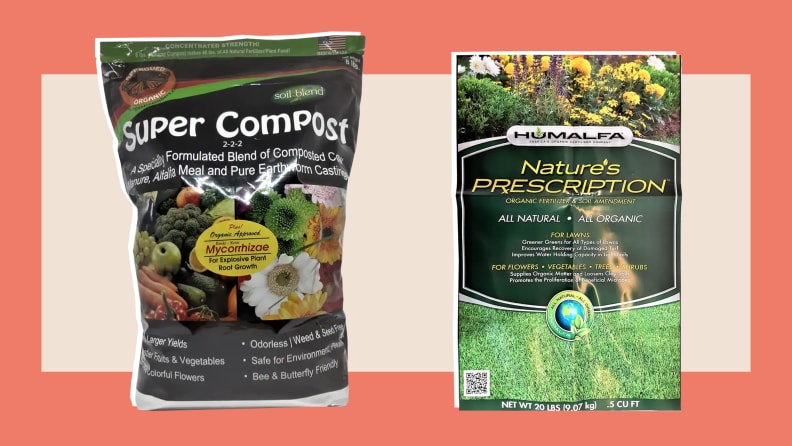
Add nutrients and compost to your soil to keep it healthy.
The first step to improving your soil is finding out what’s there now. Contact your state’s agricultural extension to find out where your local soil testing lab is. You may need to correct the soil’s pH, or add nutrients to help your plants grow stronger roots, which will help them absorb and retain water.
In general, soil with more “organic matter” in it holds water better than soil with less. One way to increase your soil’s organic matter is to add a 1-inch layer of compost to your soil by side-dressing plants or digging it into the soil for new plantings.
Select appropriate plants
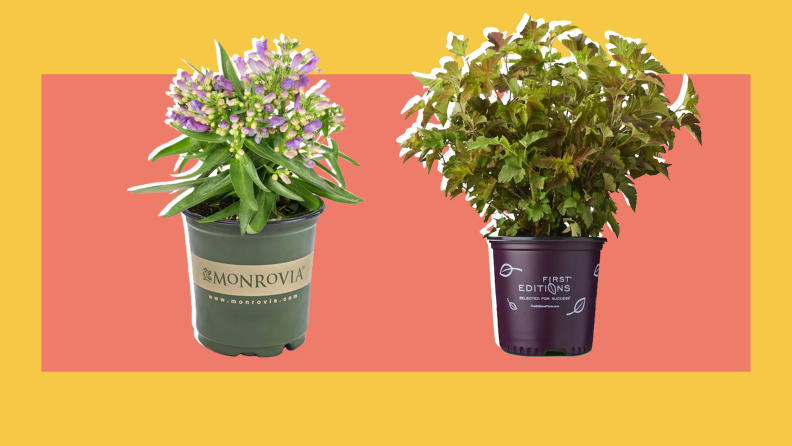
Find plants that'll thrive in unforgiving weather.
Look for plants that will thrive in your climate without extra water. Many agriculture departments and water districts offer lists of drought-tolerant plants that thrive in local landscapes, but here are five great xeriscaping plants”
- Ornamental grass: This native grass grows two feet to four feet tall, and changes with the seasons from soothing blue-green, to a fall red with silvery seed heads. Highly drought-tolerant, it thrives in the wild in every U.S. state but Nevada.
- Perennial flowers: Hollyhocks grows big, old-fashioned blooms on flower spikes up to 6’ tall. This traditional European garden annual (technically biennial) originated in the Mediterranean coast, and are surprisingly drought-tolerant. They come in a wide variety of colors, and can be used as a screen or border between areas.
- Penstemon: Penstemon are native to the Midwest and West, and highly drought tolerant. Spikes of these delicate flowers reach two feet to three feet’ tall and draw hummingbirds and bumblebees to your garden. They’re hardy to Zone 3, and have silvery foliage which is an intriguing color accent as well.
- Shrubs: Blue false indigo grows up to five feet and flowers in spring with upright spikes of deep purplish-blue flowers. Drought-tolerant, it’s hardy to zone 3 and native to the east from Maine to Georgia, and is highly attractive to pollinators.
- Ninebark: This plant grows up to 10 feet tall. It’s highly drought-tolerant once established, hardy to zone 2, and native to the eastern U.S. from Maine to Georgia and west to Nebraska. Dense clusters of white flowers in spring give way to pink seed capsules in the fall.
Irrigate efficiently
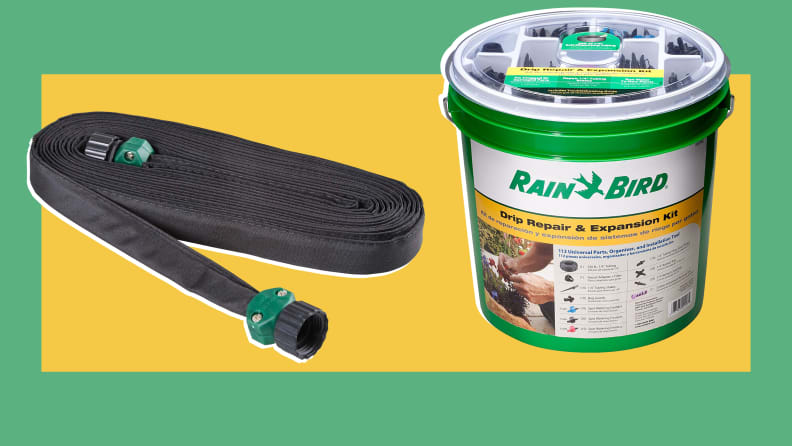
Avoid puddles and wasted water by making sure your lawn is sufficiently irrigated.
Avoid broadcast irrigation of your entire landscape. Drip irrigation, like the Rain Bird Drip Kit, uses 30% to 50% less water than sprinklers and loses less water to evaporation.
Soaker hoses, like the Melanor Flat Soaker, are also a good choice for getting water to your plant's roots, not the air.
Watering your plants by water-use zone will also help save water for the plants that really need it.
Choose practical turf grasses
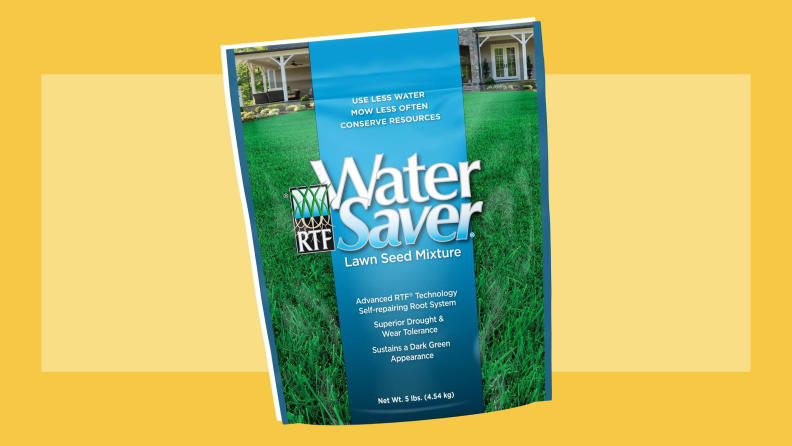
Add some tall fescue grasses to keep your lawn looking lush.
Turf grass is a high-maintenance, high-water-use planting. Try to reduce the amount of lawn in your yard to places where children or pets play, and use a xeriscape ground cover on lower-traffic areas.
If you need to have a grassy area, choose grass varieties that are drought tolerant. Bermuda grass is a good choice for low water zones and for warm areas. Northern landscapers can try tall fescue grasses such as the Scotts Turf Builder Grass Seed.
Make sure to mulch
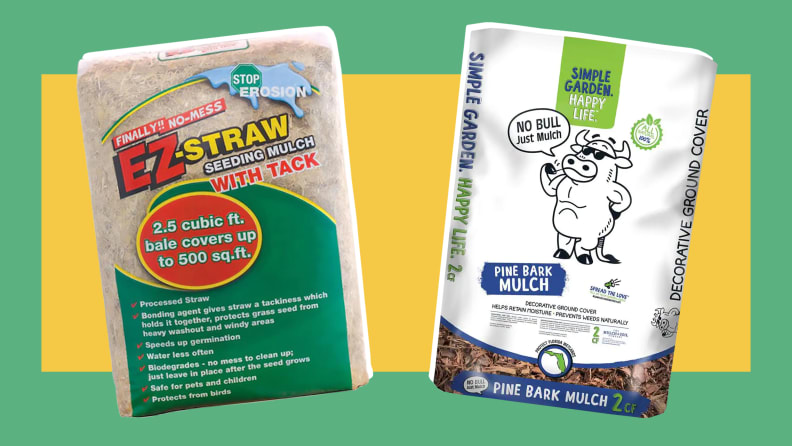
Add mulch to help retain your soil water.
If you don’t do anything else to your landscape to save water, apply mulch. Mulches help your soil retain water by reducing evaporation and erosion, keep the soil cooler, and can even enrich your soil.
Apply mulch up to two inches to three inches deep around your plants, but not up around the base of the plant—you don’t want to trap moisture up against the stem and rot your plants. Give your stems and tree trunks room to breathe.
You can use shredded leaves, straw, pine straw, compost, or bark mulch, or other plant material that’s common in your area.
Pro tip: Avoid wood-chip and bark mulches that are artificially colored. The dyes used are safe, but those mulches are sometimes made of construction waste wood.
Maintain your xeriscape landscape
In xeriscaping, less is more. Frequent pruning and fertilizing often leads to a lot of tender, green growth, which needs more water than older shrub stems—and excess fertilizer will run off your yard in storms, polluting local waterways.
Try watering less, fertilizing less, and pruning less.
The product experts at Reviewed have all your shopping needs covered. Follow Reviewed on Facebook, Twitter, Instagram, TikTok, or Flipboard for the latest deals, product reviews, and more.
Prices were accurate at the time this article was published but may change over time.


